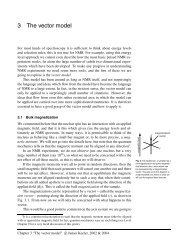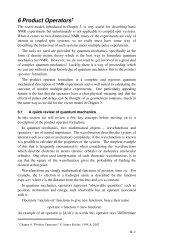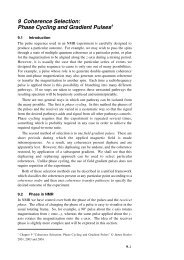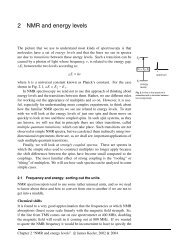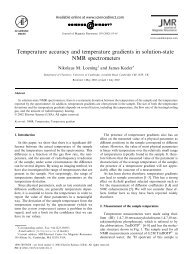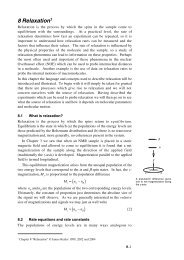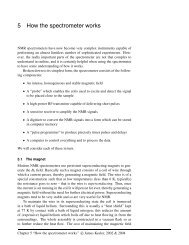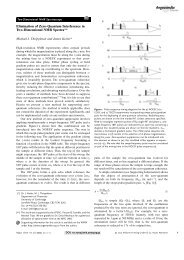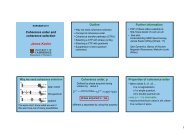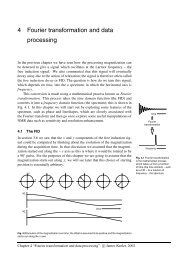Phase Cycling and Gradient Pulses - The James Keeler Group
Phase Cycling and Gradient Pulses - The James Keeler Group
Phase Cycling and Gradient Pulses - The James Keeler Group
Create successful ePaper yourself
Turn your PDF publications into a flip-book with our unique Google optimized e-Paper software.
y<br />
–x<br />
x<br />
–y<br />
pulse x y –x –y<br />
receiver x y –x –y<br />
Although both the receiver <strong>and</strong> the magnetization shift phase on each step, the<br />
phase difference between them remains constant. Each step in the cycle thus<br />
gives the same lineshape <strong>and</strong> so the signal adds on all four steps, which is just<br />
what is required.<br />
Suppose that we forget to advance the pulse phase; the outcome is quite<br />
different<br />
pulse x x x x<br />
receiver x y –x –y<br />
y<br />
–x<br />
x<br />
–y<br />
Now the phase difference between the receiver <strong>and</strong> the magnetization is no<br />
longer constant. A different lineshape thus results from each step <strong>and</strong> it is clear<br />
that adding all four together will lead to complete cancellation (steps 2 <strong>and</strong> 4<br />
cancel, as do steps 1 <strong>and</strong> 3). For the signal to add up it is clearly essential for<br />
the receiver to follow the magnetization.<br />
9.2.7 EXORCYLE<br />
EXORCYLE is perhaps the original phase cycle. It is a cycle used for 180°<br />
pulses when they form part of a spin echo sequence. <strong>The</strong> 180° pulse cycles<br />
through the phases x, y, –x, –y <strong>and</strong> the receiver phase goes x, –x, x, –x. <strong>The</strong><br />
diagram below illustrates the outcome of this sequence<br />
9–7



